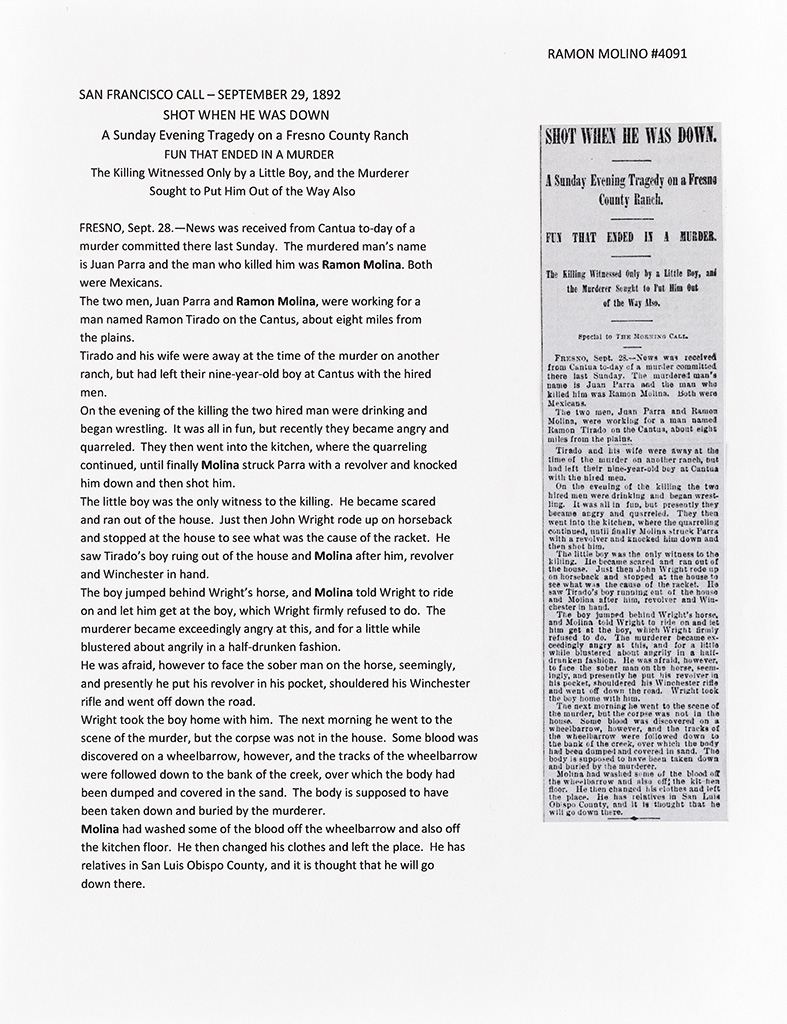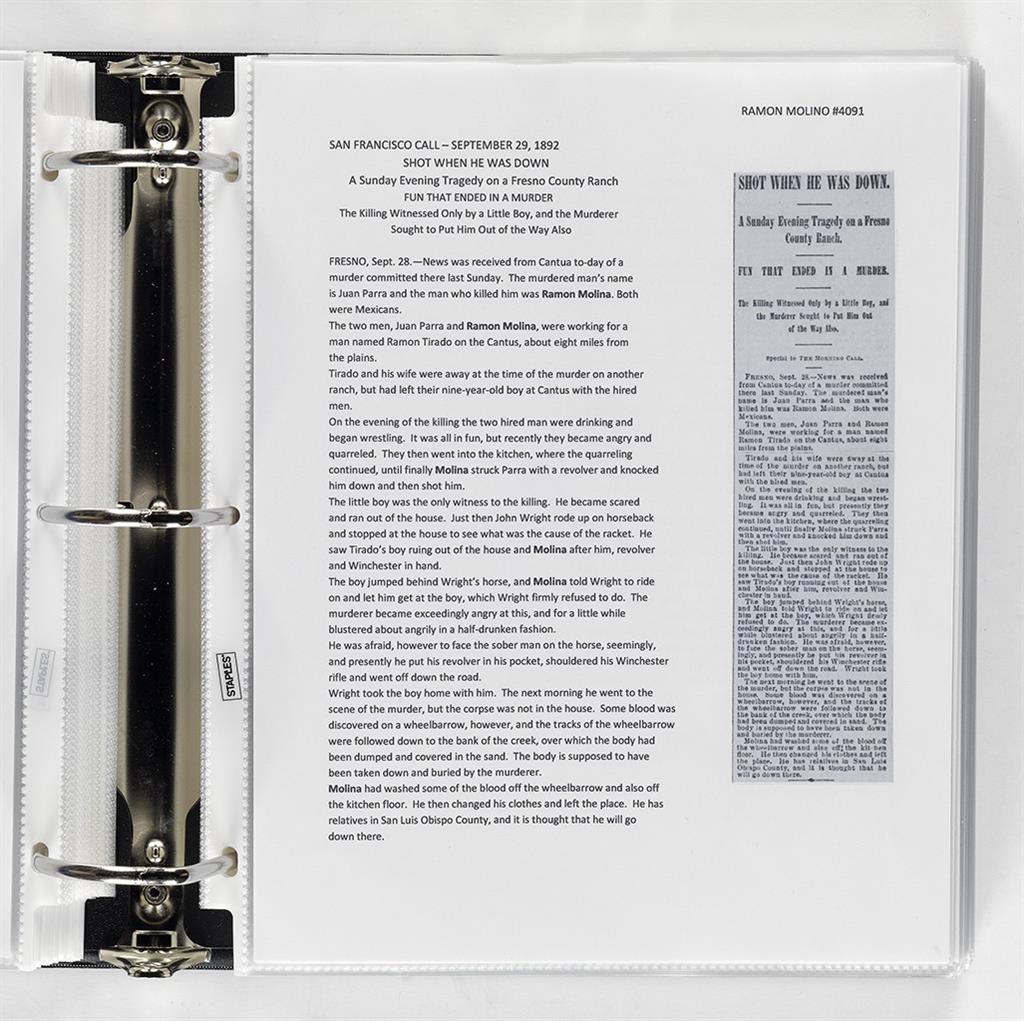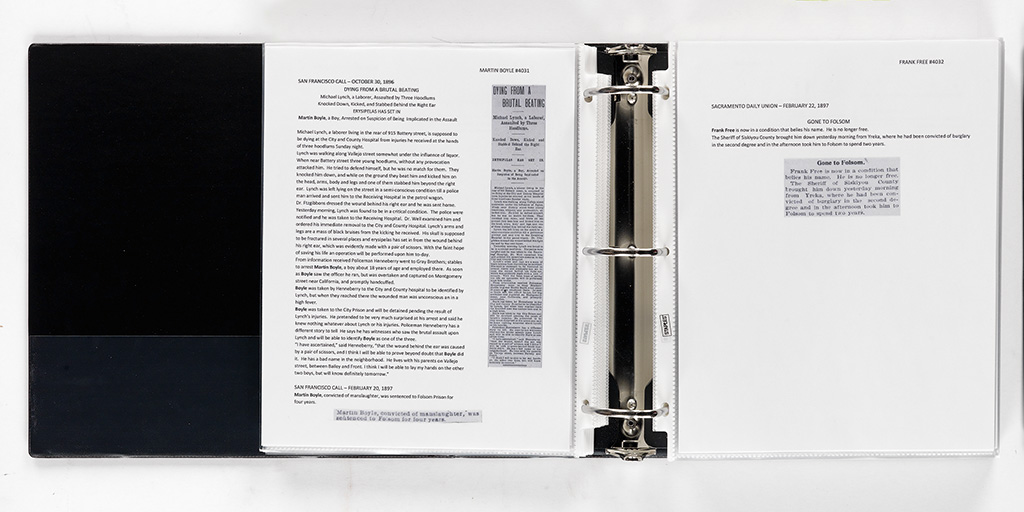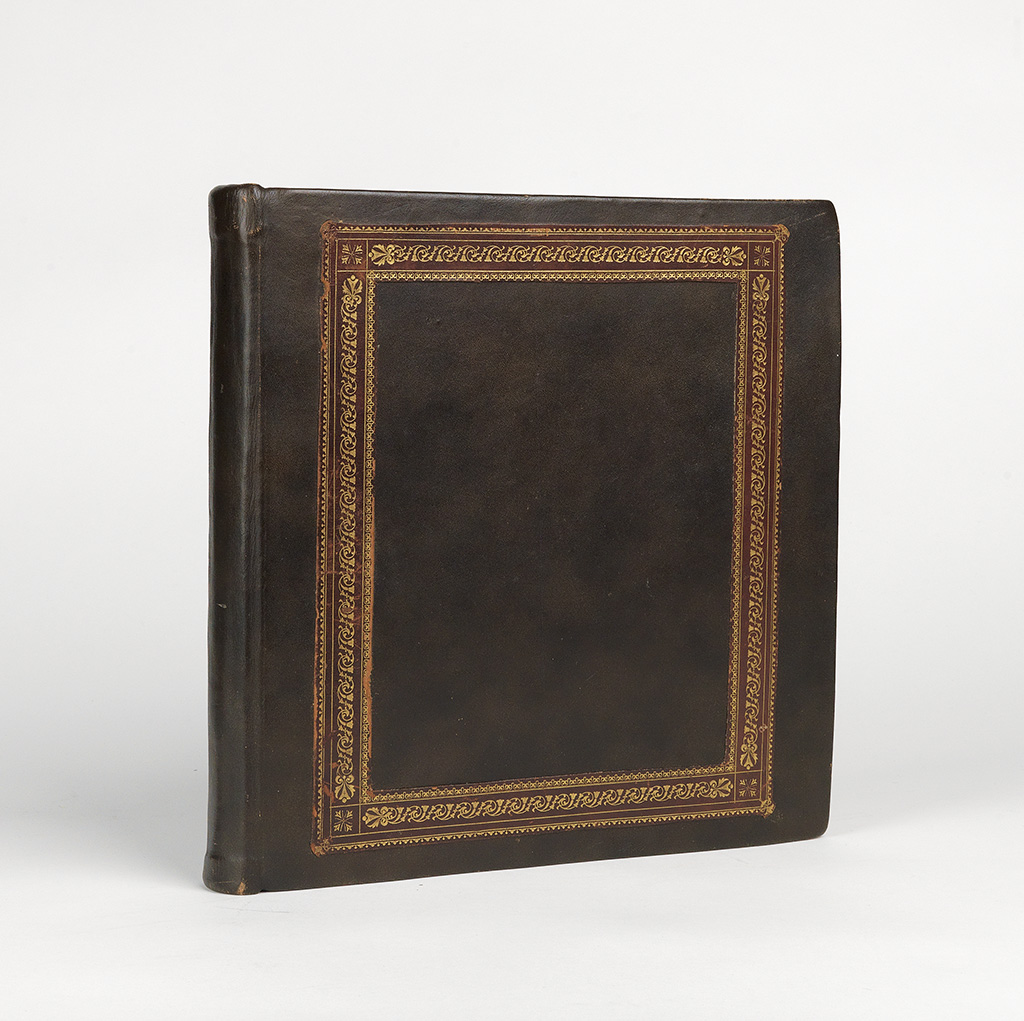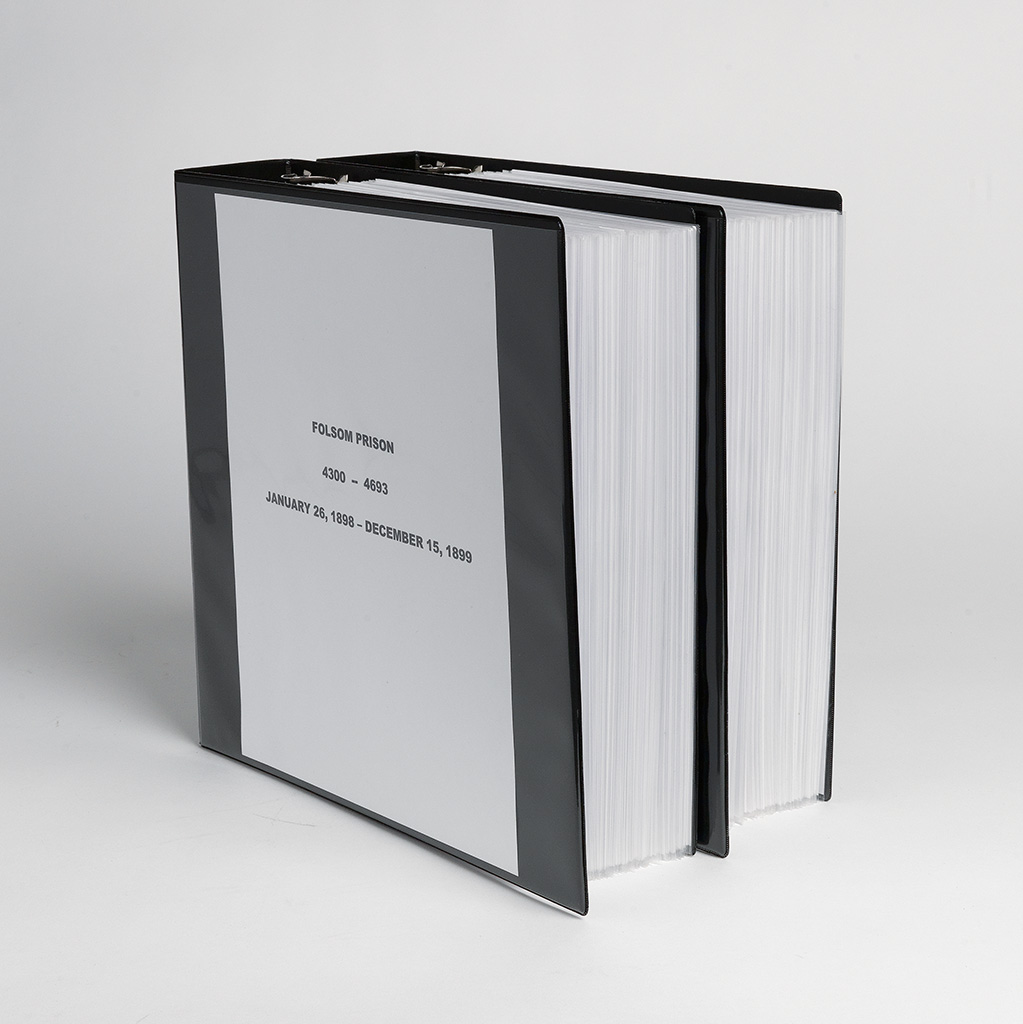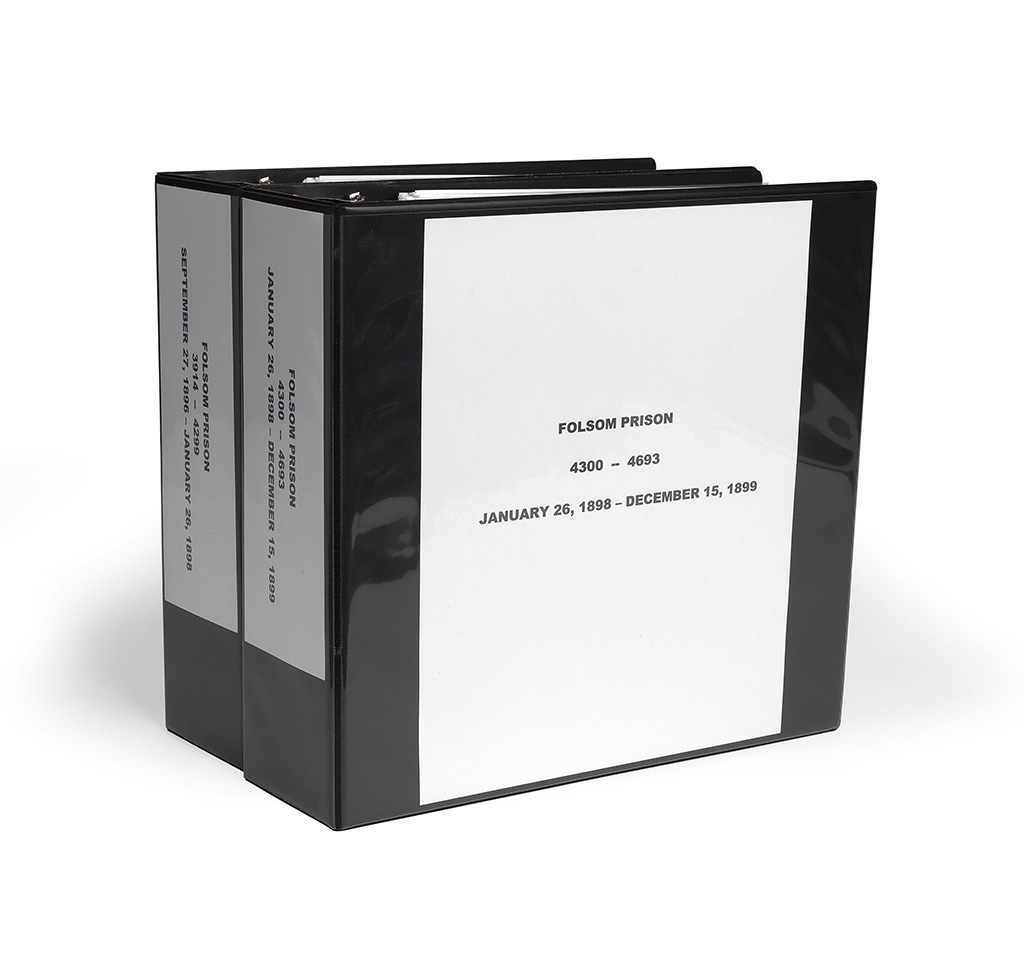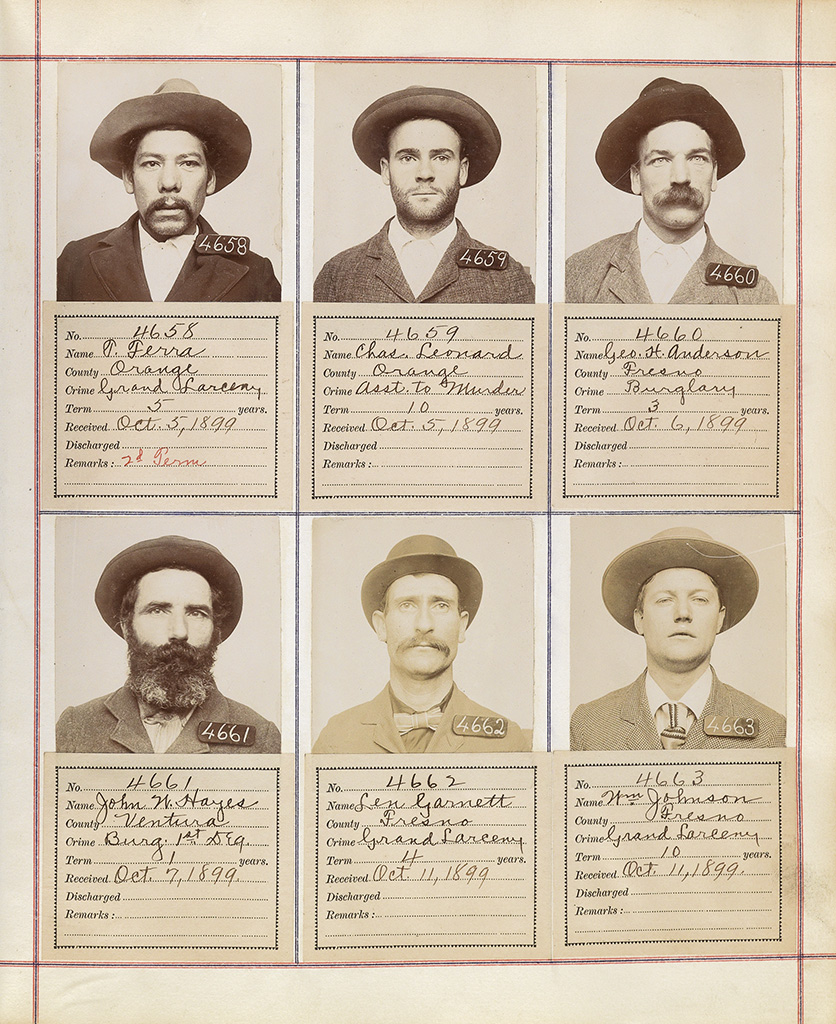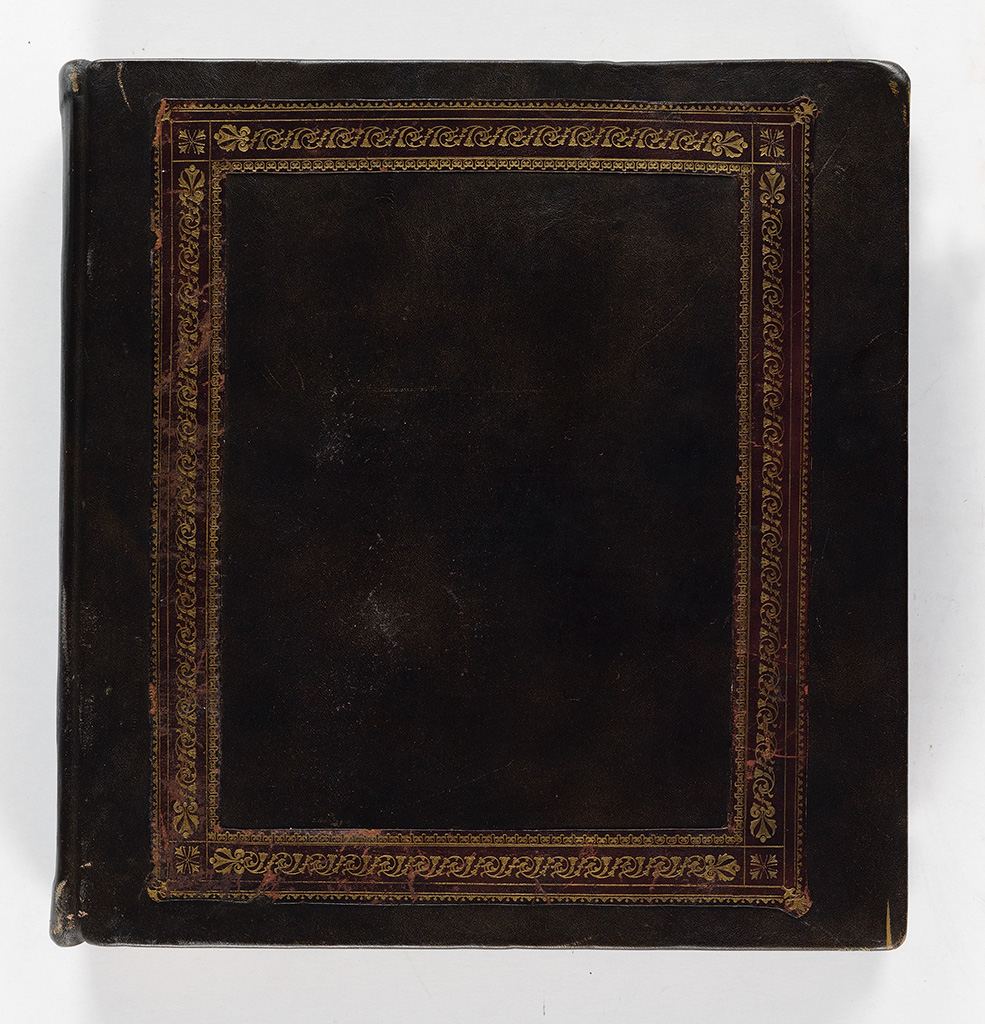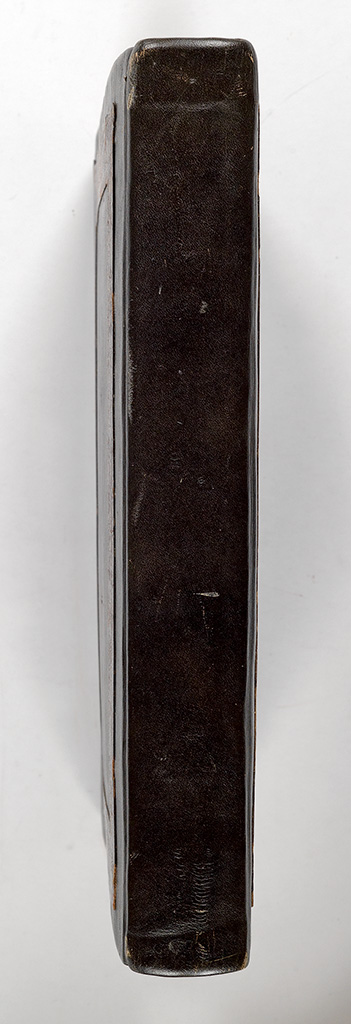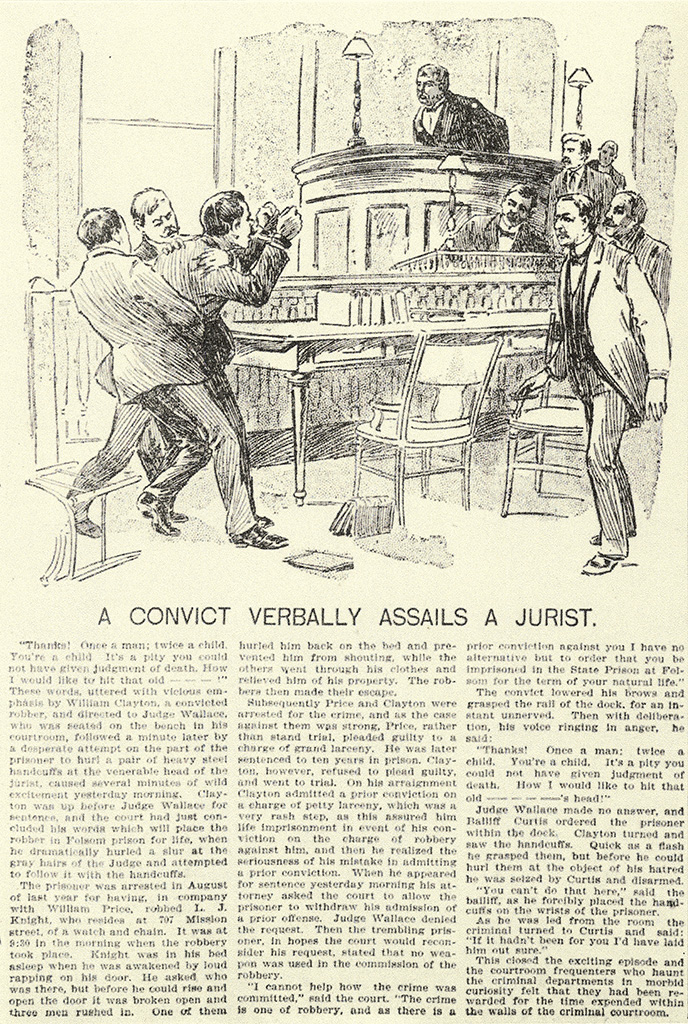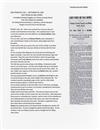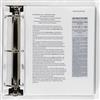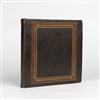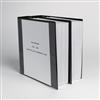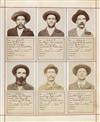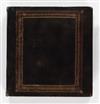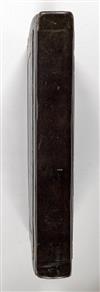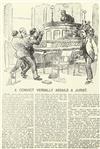Sale 2340 - Lot 16
Price Realized: $ 13,000
Price Realized: $ 16,250
?Final Price Realized includes Buyer’s Premium added to Hammer Price
Estimate: $ 10,000 - $ 18,000
(CALIFORNIA--FOLSOM PRISON ALBUM)
Crime album containing 756 photographs of male inmates at the Folsom Penitentiary. With 63 pages amd 12 photographs mounted recto/verso, including handwritten information detailing the crime, priors, and proposed release dates. Many are annotated in red ink, "Died; Executed; Committed suicide;" and among the criminals is someone named George W. Bush. Accompanying the album are three thick binders with historical accounts about 637 of the inmates, with copies of period newspaper clippings describing their crimes. Folio-size morroco, rebound, with the original gilt decorative border affixed to the front cover. 1896-1899
Crime album containing 756 photographs of male inmates at the Folsom Penitentiary. With 63 pages amd 12 photographs mounted recto/verso, including handwritten information detailing the crime, priors, and proposed release dates. Many are annotated in red ink, "Died; Executed; Committed suicide;" and among the criminals is someone named George W. Bush. Accompanying the album are three thick binders with historical accounts about 637 of the inmates, with copies of period newspaper clippings describing their crimes. Folio-size morroco, rebound, with the original gilt decorative border affixed to the front cover. 1896-1899
Additional Details
A rogue's gallery depicting a host of characters of the old and new west. Several of the men were incarcerated for "crimes against nature," or "furnishing liquor to Indians," as well as "murder, embezzlement, robbery" and one fellow for "train wrecking." There are also pictures of Chinese men with their queues prominently displayed, and other subjects of diverse ethnic or racial backgrounds.
The historic nature of this album has been greatly enhanced by the extensive research performed by the collector, who is a professional researcher and discovered a wealth of information from local newspapers -- primarily in Los Angeles and San Francisco -- but as far east as Chicago.
The printed matter details the crimes in the stylized prose of the newspaper reporter. Some of the accounts are lengthy narratives with the hardhitting literary punch of a great mystery writer, while others are terse and factual. In either instance, the subject's personal life is brought into sharp relief. Rage, jealousy, and violence infuse their stories: bad marriages gone awry, longstanding family disputes that spun out-of-control, sordid tales of spousal and child abuse, in addition to horrible crimes committed by psychopathic outsiders. In some instances the extended length of a prison sentence seems out-of-proportion to the crime, e.g., stealing "raisins" or "a chicken."
The portraits capture the criminals as they were being arraigned and an id number is affixed to their label or collar. The photographer's visual style, in which nearly all of the subjects are positioned obliquely, avoiding the direct gaze of the camera's lens, is an interesting conceit. WIthout the benefit of eye contact, many of the criminals appear dazed or lost.
Also included are articles about Folsom and San Quentin penitentiaries. Folsom, which was regarded as the tougher institution, was opened as a result of overcrowding at nearby San Quentin (where agents were breaking up an opium ring); the more difficult cases were sent to Folsom..
The historic nature of this album has been greatly enhanced by the extensive research performed by the collector, who is a professional researcher and discovered a wealth of information from local newspapers -- primarily in Los Angeles and San Francisco -- but as far east as Chicago.
The printed matter details the crimes in the stylized prose of the newspaper reporter. Some of the accounts are lengthy narratives with the hardhitting literary punch of a great mystery writer, while others are terse and factual. In either instance, the subject's personal life is brought into sharp relief. Rage, jealousy, and violence infuse their stories: bad marriages gone awry, longstanding family disputes that spun out-of-control, sordid tales of spousal and child abuse, in addition to horrible crimes committed by psychopathic outsiders. In some instances the extended length of a prison sentence seems out-of-proportion to the crime, e.g., stealing "raisins" or "a chicken."
The portraits capture the criminals as they were being arraigned and an id number is affixed to their label or collar. The photographer's visual style, in which nearly all of the subjects are positioned obliquely, avoiding the direct gaze of the camera's lens, is an interesting conceit. WIthout the benefit of eye contact, many of the criminals appear dazed or lost.
Also included are articles about Folsom and San Quentin penitentiaries. Folsom, which was regarded as the tougher institution, was opened as a result of overcrowding at nearby San Quentin (where agents were breaking up an opium ring); the more difficult cases were sent to Folsom..
Exhibition Hours
Exhibition Hours
Aliquam vulputate ornare congue. Vestibulum maximus, libero in placerat faucibus, risus nisl molestie massa, ut maximus metus lectus vel lorem.








